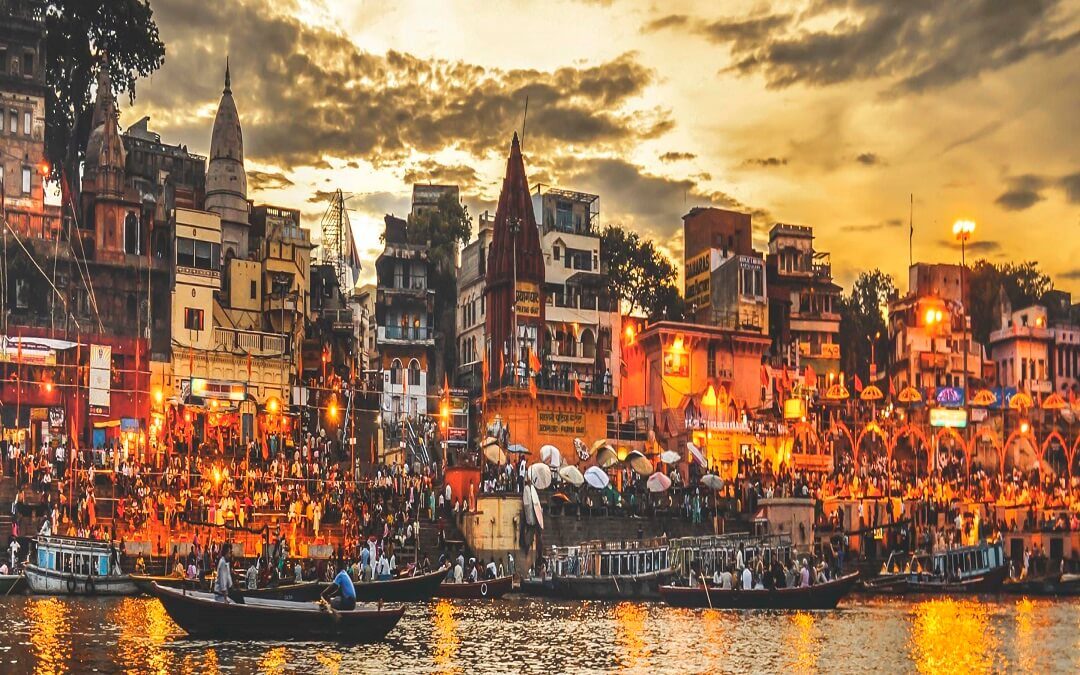India is a country that boasts of several ancient cities, each with a unique cultural heritage that dates back centuries. Varanasi, also known as Banaras or Kashi, is one such city that is a symbol of India’s spirituality, cultural richness, and diversity. Situated on the banks of the river Ganges, Varanasi is a holy city that attracts visitors from across the globe for its religious significance, ancient temples, and Ghats.
Recently, I had the opportunity to attend a wedding in Varanasi, and it was an experience of a lifetime. From the vibrant colors of the décor to the delicious food, everything was a feast for the senses. In this article, I will take you through my journey of attending a wedding in Varanasi and share some of the unique customs and traditions I witnessed.
It was pleasant day when i went Varanasi to attend my friend Dhananjay Yadav’s wedding reception.
The Arrival
As soon as I landed in Varanasi, I was greeted with the sounds of the dhol and nagada, which are traditional Indian musical instruments. The air was filled with the aroma of incense sticks and the sweet fragrance of flowers. I was welcomed with a tilak, which is a mark on the forehead made with vermilion powder, and a garland of flowers. The groom’s family had arranged for a car to take me to the wedding venue, which was located near the banks of the Ganges.
The Pre-Wedding Ceremonies
The pre-wedding ceremonies had already started when I arrived. The first ceremony was the Haldi, which is a traditional Indian ceremony where a paste of turmeric, sandalwood, and other ingredients are applied to the bride and groom’s body. It is believed to bring good luck and ward off evil spirits. The second ceremony was the Mehendi, where intricate henna designs were applied to the bride’s hands and feet. The women in the family also got henna designs done on their hands.
The Wedding Ceremony
The wedding ceremony took place in a beautifully decorated mandap, which is a canopy-like structure made of flowers and other decorative items. The bride and groom exchanged garlands, and the priest chanted mantras in Sanskrit. The couple then took seven vows, each symbolizing a different aspect of their married life. The ceremony was followed by a grand feast, where traditional Indian dishes like biryani, butter chicken, and gulab jamun were served.
The Post-Wedding Celebrations
The post-wedding celebrations were just as vibrant as the pre-wedding and wedding ceremonies. The couple left for the groom’s house in a beautifully decorated car, accompanied by a procession of family members and friends dancing to the beats of the dhol and nagada. The groom’s family welcomed the couple with aarti, which is a traditional Indian ceremony where a tray with lighted lamps, flowers, and other offerings are presented to the deity. The couple then cut a cake and exchanged gifts with each other.
FAQs:
What is the significance of the Haldi ceremony?
What is a mandap?
What are some traditional Indian dishes served at weddings?
What are the pre-wedding ceremonies in a Hindu wedding?
What is the Baraat?
What is the significance of the wedding ceremony in a Hindu wedding?
Conclusion
The wedding I attended in Varanasi was a truly memorable experience. It was a perfect blend of tradition and modernity, and it showcased the rich culture and heritage of Varanasi. The pre-wedding ceremonies, the wedding ceremony, and the reception were all grand affairs that were executed flawlessly. It was an experience that I will cherish for a lifetime.

